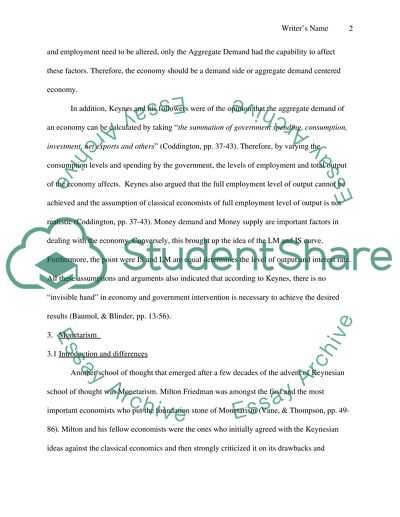Cite this document
(“Compare and contrast keynesianism, monetarism, and neo-classicism how Research Paper”, n.d.)
Compare and contrast keynesianism, monetarism, and neo-classicism how Research Paper. Retrieved from https://studentshare.org/miscellaneous/1561057-compare-and-contrast-keynesianism-monetarism-and-neo-classicism-how-do-new-theories-of-economics-develop-overtime
Compare and contrast keynesianism, monetarism, and neo-classicism how Research Paper. Retrieved from https://studentshare.org/miscellaneous/1561057-compare-and-contrast-keynesianism-monetarism-and-neo-classicism-how-do-new-theories-of-economics-develop-overtime
(Compare and Contrast Keynesianism, Monetarism, and Neo-Classicism How Research Paper)
Compare and Contrast Keynesianism, Monetarism, and Neo-Classicism How Research Paper. https://studentshare.org/miscellaneous/1561057-compare-and-contrast-keynesianism-monetarism-and-neo-classicism-how-do-new-theories-of-economics-develop-overtime.
Compare and Contrast Keynesianism, Monetarism, and Neo-Classicism How Research Paper. https://studentshare.org/miscellaneous/1561057-compare-and-contrast-keynesianism-monetarism-and-neo-classicism-how-do-new-theories-of-economics-develop-overtime.
“Compare and Contrast Keynesianism, Monetarism, and Neo-Classicism How Research Paper”, n.d. https://studentshare.org/miscellaneous/1561057-compare-and-contrast-keynesianism-monetarism-and-neo-classicism-how-do-new-theories-of-economics-develop-overtime.


